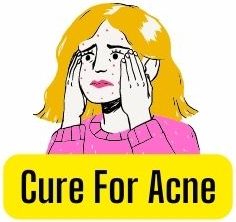
What is the white stuff in a pimple, and how can you find it? The answer is bacteria. You probably have a pimple on your face at some point in your life. The fluid coming out of your pimple is the same thing you’ve noticed in your toilet. But, why is it so white? Read on to find out more! You’ll be amazed at what you can find!
Serosanguinous fluid
The serosanguinous fluid from a pimple contains blood and serum. Most physical wounds produce drainage. In the first days of healing, this fluid is clear or yellowish and may attach to the dressing. Later, this fluid becomes pale red. Serosanguinous fluid is not harmful unless it causes an infection or is accompanied by other symptoms. Here are some signs and symptoms of serosanguinous drainage.
A clear liquid coming from a pimple may be a mixture of substances. Some of them are water, while others are composed of white blood cells that fight off infections and pimple-causing bacteria. A pimple oozing clear fluid is often accompanied by solidified sebum and dead skin cells. It is the combination of these two substances that gives pimples a reddish appearance.
There are two main types of serosanguinous fluid. One is made by the body when it is infected, while the other is produced by a bacterium. The latter can cause cross-contamination. It can be removed by soaking a cotton bud in alcohol. Serosanguinous fluid is often a sign of infection, and you should treat it with a gentle cleanser.
A pustule is a circumscribed collection of white blood cells and serous fluid. Its morphological pattern indicates a different spectrum of treatment and differential diagnosis. A pustule may be accompanied by a bulla or a macule, and it is generally less than 1 cm in size. If it is accompanied by pus, it is a sign of a bacterial infection.
Sebaceous filaments
There is an obvious solution for acne that reduces the appearance of the sebaceous filaments. One method is to exfoliate the skin with a cleansing wash. BHA (bicylic acid) can dive through oil to reach the pimple. This action will remove dirt, bacteria, and dead cells. You should avoid popping pimples unless you want to scar or spread the infection.
Although the sebaceous filaments are harmless and necessary for healthy skin, picking them off can lead to scarring, clogged pores, and even infection. Although these filaments are natural, some people produce too much sebum, which leads to excessive growth. To minimize the appearance of these filaments, a combination of skincare products and a good facial can help. Pore strips are another option for temporary removal.
What are sebaceous filaments? These are the tube-like structures that line the pores. They contain sebum and help move it from the sebaceous gland to the surface. When these filaments are blocked, pimples will be more noticeable. They are a common reason why pimples are so prone to recurring. But there are many other reasons to leave these filaments alone, including skin sensitivity and infection.
While sebaceous filaments look like black spots on the skin, they’re actually white or light yellow. They’re often raised slightly off the surface of the skin and may be slightly sunken. A blackhead, on the other hand, is a dark plug that’s slightly raised off the surface of the skin. This dark color is the result of oxidation and a buildup of dead skin cells.
Dead skin cells
A pimple is formed when bacteria and dead skin cells clog a pore. This bacteria then brews inside the blemish and causes a white liquid known as pus. This white liquid is composed of dead skin cells and is surrounded by sebum, excess oil and a blackhead. The white stuff that is in a pimple is the product of a bacterial battle.
In the beginning, all types of pimples start as comedones, which are basically little balls of dead skin cells that get trapped beneath the skin. These white balls contain keratin, a protein found in the hair and skin. They are commonly found on babies and are harmless. However, they may lead to acne if they become larger and more painful. Listed below are some treatments for pimples and how to prevent them in the future.
A pimple also contains serosanguinous fluid. The fluid, which is produced when the pimple is traumatized, squeezing the pimple, will push out this byproduct of inflammation. Pus is made up of inflammatory cells, neutrophils and fluid. Pus will not always reach the head of the pimple, but it can still make its way to the head.
When the white stuff in a pimple is black, it means that the blemish has black skin cells. Blackheads, on the other hand, are made of blackheads. The difference between blackheads and whiteheads comes down to the amount of oxygen in the pore. When sebum is exposed to oxygen, bacteria cannot survive. This is the reason why acne is a form of pimple.
Bacteria
Acne-causing bacteria called Propionibacterium acnes live on our skin. These organisms aggravate the immune system, triggering the red, swollen bumps we commonly associate with acne. A new study published in the Journal of Investigative Dermatology suggests that P. acnes is responsible for both good and bad pimples. This research may lead to new treatments.
The fluid that fills a pimple is called pus. This yellowish-white fluid contains bacteria and dead skin cells. It’s usually a sign of infection. Pustules are bulging patches of skin filled with yellowish fluid. The bacteria that cause acne can cause these bumps, but it’s best not to pick or squeeze them unless they are too big or painful to be popped.
Although pus is the most obvious sign of infection, bacteria can infect other parts of the body, including the face. Infected pimples can cause swelling, pain, and even require antibiotics. Luckily, the bacteria won’t infect you if you follow some simple tips. First of all, don’t pop pimples. Popping a pimple can lead to an open wound that allows bacteria to enter. You should also avoid touching the area until it’s healing.
Another way to remove pus is to squeeze the pimple. This will help get rid of the bacteria, but it will also push the bacteria deeper into the skin, potentially leading to an infection. Secondly, popping pimples can lead to more inflammation and longer blemishes. To prevent this, always use a clean, dry finger to squeeze a pimple. And always remember to wash your hands afterward.
Sebum
The white stuff in a pimple is sebum, which is oily secretion of the skin. This oil, when combined with dead skin cells, attracts bacteria. This bacteria, P acnes, lives in the hair follicle, causing an infection. The inflammation results in a red bump on the skin. It can be traumatizing to the skin, which can cause a larger breakout.
A yellowish liquid is the white stuff in a pimple. It is made of bacteria, white blood cells, and dead skin cells. As the bacteria multiply inside the pore, it produces more pus. This is why it’s important to treat pimples as soon as possible, to prevent further infection and further irritation. However, popping a pimple isn’t a good idea. If you’re tempted to pop it, you should carefully follow the directions. It’s important to follow the instructions carefully so as not to aggravate the situation.
Puff is the white stuff in a pimple. This fluid is made of dead skin cells and sebum. It’s also called serosanguinous fluid. Whiteheads usually appear on oilier skin types, but they can also develop on dry skin. You can combat whiteheads with chemical exfoliation and thorough cleansing. If you pop a pimple, you can expect a whitehead to appear.
To treat acne, you should always wash your face twice a day. This removes the excess oil and dead skin cells that clog pores. You can also apply a topical treatment such as benzoyl peroxide gel. These creams contain ingredients that help kill the bacteria that cause pimples. Avoid excessive sun exposure and you should be fine. It is essential to follow the instructions carefully so that you don’t cause more damage to your skin.





